The mid-range television segment is expanding rapidly, and TCL C75B demonstrates that it’s possible to get really solid equipment in this price category. This model is clearly designed with gamers in mind – the HDMI 2.1 port offers a lot of potential, providing VRR, ALLM, and impressive 144 Hz refresh rate in 4K (or 240 Hz in Full HD), which will certainly please both gaming and sports fans. The TV’s operation is pleasant and intuitive, mainly thanks to the Google TV system. While there may be minor stutters, the wealth of available apps and features more than compensates for this – practically everything we need is at our fingertips or even at the sound of our voice if we wish to talk to the remote in Polish. As for picture quality, TCL C75B also performs well. Thanks to the VA panel, it boasts quite good contrast, and the presence of Dolby Vision allows for enjoyable HDR effects, even if the brightness isn’t mind-blowing. Of course, it isn't without its flaws – despite the fast panel, there is some motion blur, and the lack of traditional features (like USB recording) may disappoint some users. Nevertheless, in its price category, the C75B is a very attractive option, especially for those looking for a screen designed for high-level gaming.
- Matching (Score)
- Our verdict
- TV appearance
- Where to buy
- Contrast and black detail
- HDR effect quality
- Factory color reproduction
- Color reproduction after calibration
- Smoothness of tonal transitions
- Image scaling and smoothness of tonal transitions
- Blur and motion smoothness
- Console compatibility and gaming features
- Input lag
- Compatibility with PC
- Viewing angles
- TV efficiency during daytime
- Details about the matrix
- TV features
- Apps
- Playing files from USB
- Sound
TCL C75B vs SAMSUNG S90F (WOLED)
Direct compare
S90FAE

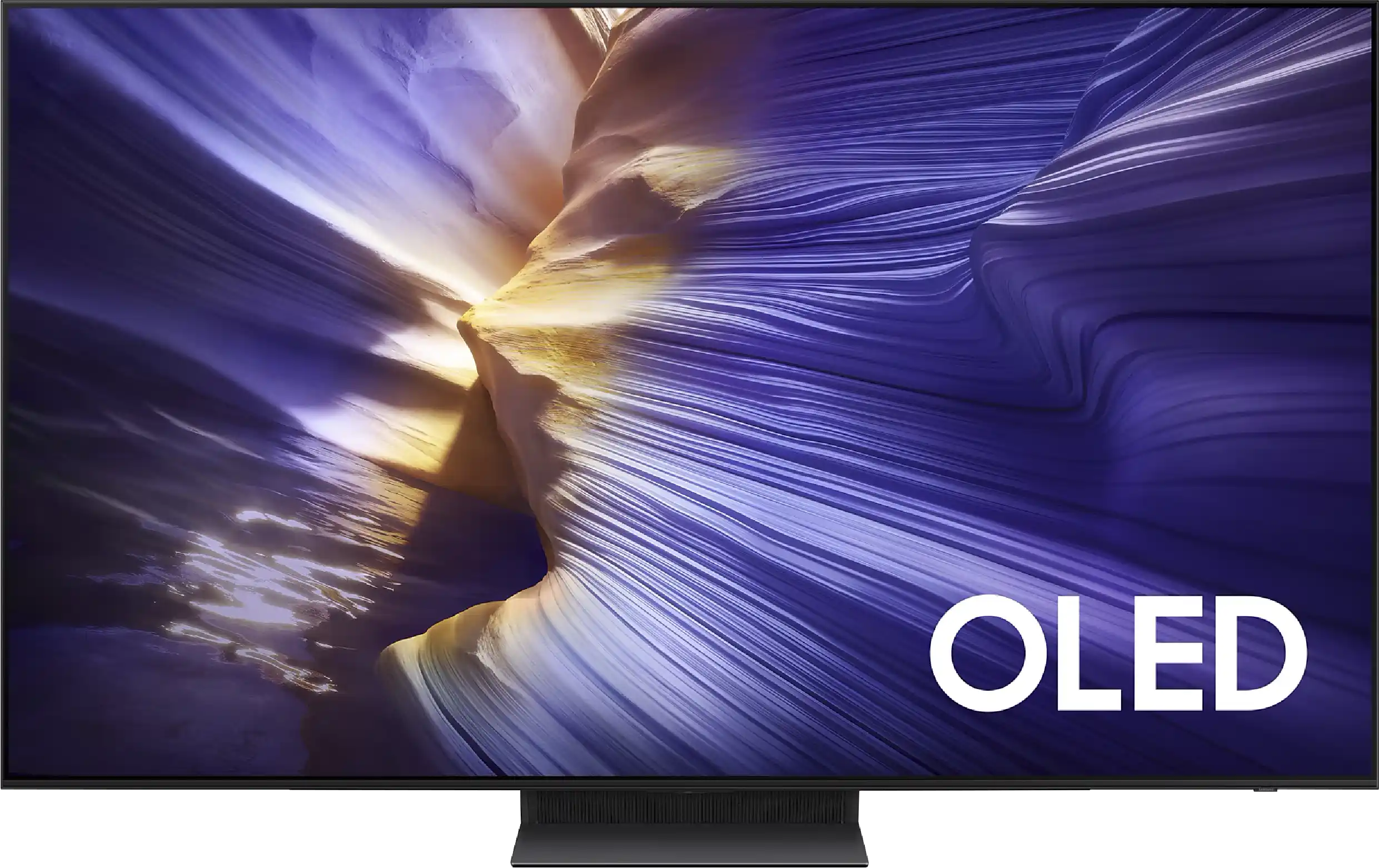
Panel type: LCD VA
Resolution: 3840x2160
System: Google TV
Model year: 2024
Complete the survey to find out the result

Panel type: WRGB OLED
Resolution: 3840x2160
System: Tizen
Model year: 2025
Complete the survey to find out the result

Overall rating
6.7
8.1
Movies and series in UHD quality
6.3
8.3
Classic TV, YouTube
6.0
8.7
Sports broadcasts (TV and apps)
6.2
8.5
Gaming on console
8.4
9.6
TV as a computer monitor
7.6
8.6
Watching in bright light
4.9
6.1
Utility functions
7.7
7.5
Apps
10.0
8.3
Sound quality
6.6
7.4
Complete the survey to find out what fits your preferences
Advantages
Great TV for gamers - HDMI 2.1: VRR, ALLM, Game Bar
Very high refresh rate - 240Hz in FullHD and 144Hz in 4K
Very low input lag - 9ms
Advanced operating system - GoogleTV
Support for Dolby Vision, HDR10+
Decent black levels thanks to VA panel
Stunning black and contrast
High brightness for an OLED TV - 1200 nits peak brightness
Very good motion smoothness - 144Hz OLED display
Low latency - input lag 5ms
Gaming features: 4x HDMI 2.1, VRR, ALLM, Game Motion Plus, etc.
PiP function and great support for external devices with solar remote control
Expanded operating system: Tizen
Pleasant sound with slightly noticeable bass
Disadvantages
Limited brightness (350 cd/m²), making it difficult to watch in bright rooms
Issues with the smoothness of the Google TV system
Missing traditional features like USB recording or PIP
Average response time of the panel causing motion blur
Issues with playback of certain formats from USB.
Subtle degradation in tonal transitions (performs worse than the previous S90D)
Lack of support for DTS:X – an external amplifier is required for full support of this format
Our verdict
Samsung S90F is an excellent representative of the premium mid-range in the world of OLED TVs. We have an organic matrix here that guarantees perfect contrast – and no matter how much LCD manufacturers try with local dimming in Mini LEDs, this black simply cannot be replicated. The S90F shows its class without any compromises. Compared to last year's model, we get a slightly brighter WOLED panel, which in favourable conditions can reach up to 1200 nits. This is a result that suffices for comfortable viewing of HDR materials in most scenes at reference quality – especially on streaming platforms such as Netflix. The picture quality here is very high, regardless of whether we are watching a movie, playing on a console, or streaming a sports broadcast. By the way – versatility is one of the biggest advantages of this model. With 144 Hz refresh rate, very low input lag, and a full package of gaming features (including functional HGiG and the unique Game Motion Plus motion smoother), it's hard to complain about anything here. The Tizen system performed really well on the S90F. It has its limitations – primarily the closed ecosystem and a smaller selection of apps than Google TV – but if you mainly use the most popular services, this shouldn't be an issue. A big plus is also the remote, which can operate most connected devices – even despite the lack of a numeric keypad. There are downsides too. The built-in media player has issues with some formats, and the anti-reflective coating typical of WOLEDs doesn’t handle strong light very well – reflections can be noticeable. We also do not have support for DTS and Dolby Vision, but this is a standard at Samsung that's been expected for years. So is the S90F with a WOLED panel the perfect TV? No – but it really is very close. It is one of the most polished and complete OLEDs in this price range, which can easily handle any content, from a series on Netflix, to console gaming, to a Sunday match.
TV appearance




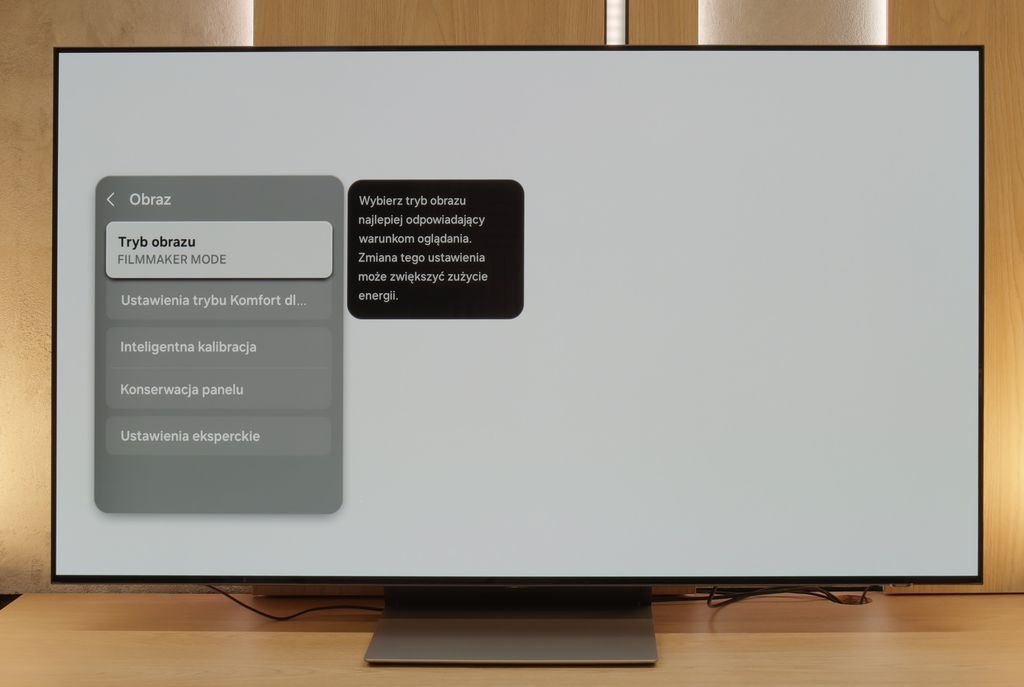
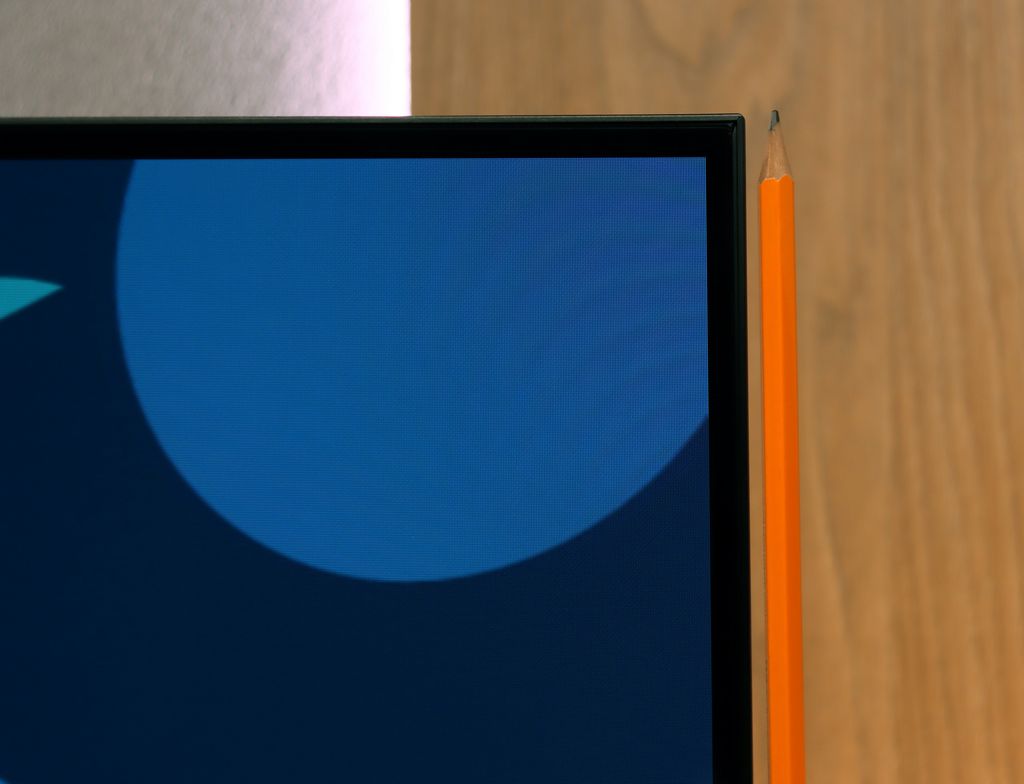
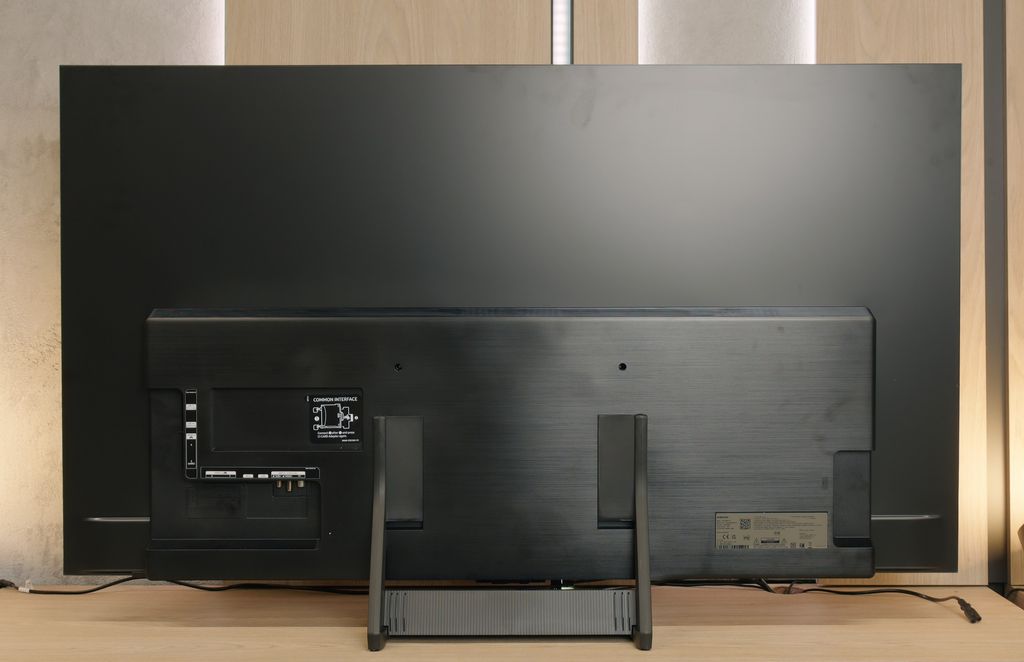
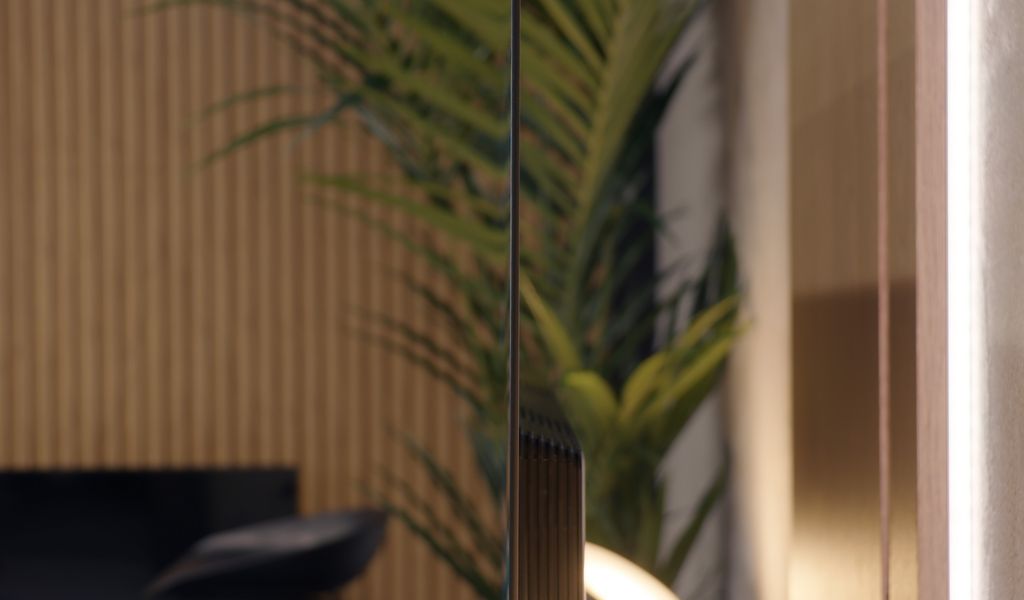
Contrast and black detail
5.9/10
10/10
Local dimming function: No
Contrast:

Result
5,400:1

Result
5,700:1

Result
6,600:1

Result
6,250:1

Result
4,100:1

Result
∞:1

Result
∞:1

Result
∞:1

Result
∞:1

Result
∞:1
Halo effect and black detail visibility:


The TV we tested, TCL C75B in size X," is equipped with a VA panel, which naturally provides quite decent contrast results – and that’s what we observed during our tests. On each test pattern, the TV achieved a contrast level of around 5500:1. This is a result that can be considered very good in this price category. The black in this model performs really well, though of course, it’s far from perfect.
Due to the C75B belonging to the mid-range segment, we won’t find local dimming technology here. This is particularly noticeable in more demanding scenes, such as those from the film Sicario 2, where we noticed that the black takes on a navy hue instead of a pitch-black. This limitation of panels without local dimming can be particularly evident in evening viewings with the lights off, when dark elements of the image are more pronounced. It's worth keeping this in mind when choosing a TV in this category, especially if we care about the best quality of black while watching movies at night.
In the case of the Samsung S90F, we are dealing with an interesting situation: nearly all size variants have been equipped with WOLED panels, except for the 65-inch version, which received a QD-OLED panel. In this test, we analyse the version with the WOLED panel produced by LG Display, but the question remains; Does this affect the quality of black and contrast in this part of the test? In practice – it does not. Regardless of the technology used, both panels can produce perfect black and infinite contrast. This is exactly what we expect from any top-tier television. Watching a series in the evening, in a completely dark room, is sheer pleasure. The television easily separates bright elements – such as reflections or background lights – from the deep, dark parts of the image, without creating any halo or brightness issues that high-end LCD televisions still struggle with. This is where OLED technology shows its strength – and the S90F is no exception. When it comes to black and contrast, we can't fault it at all.
HDR effect quality
5.1/10
7.2/10
Luminance measurements in HDR:

Result
368 nit

Result
382 nit

Result
429 nit

Result
404 nit

Result
425 nit

Result
1099 nit

Result
1177 nit

Result
1252 nit

Result
1183 nit

Result
577 nit
Scene from the movie “Pan” (about 2800 nits)


Scene from the movie “Billy Lynn” (about 1100 nits)

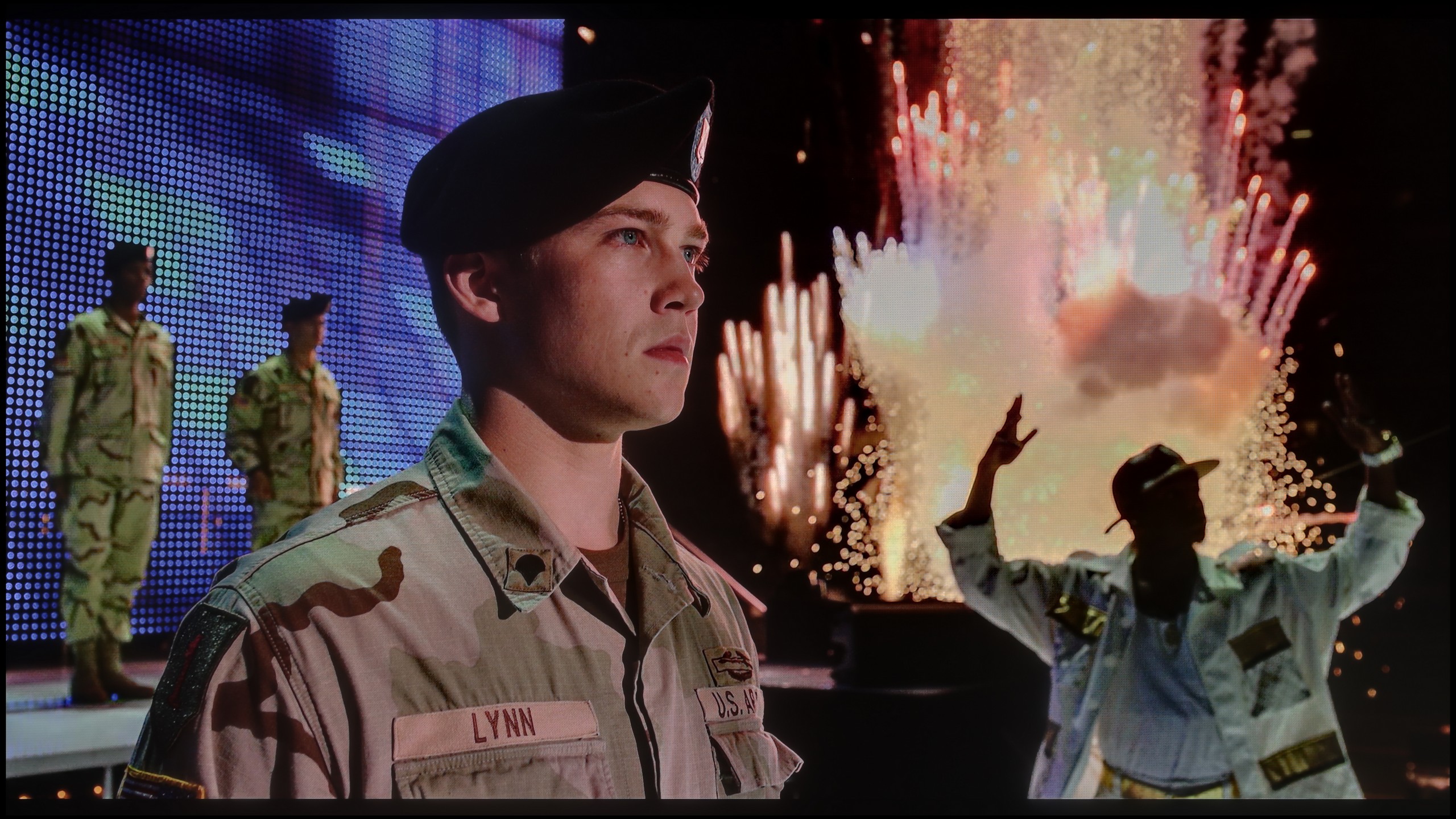
Static HDR10


Dynamic: Dolby Vision
Dynamic: HDR10+


HDR luminance chart:
SAMSUNG S90F (WOLED)
Luminancja HDR
Luminance of RGB colors
TCL C75B
Luminancja HDR
Luminance of RGB colors
During our brightness test, the TCL C75B "spat out" around 380 nits of brightness. We recorded similar results while watching most of the films we tested. These can be considered average – the TV performs decently in this segment, but around 400 nits is definitely too low to fully experience the magic of HDR effects. Of course, such results are better than those of budget models, which can achieve nearly half the brightness values. However, for HDR enthusiasts seeking stronger lighting effects and greater realism, the C75B may prove insufficient. On the plus side, it's worth mentioning the coverage of the DCI-P3 colour gamut at 95%. This is a very good result that easily suffices to enjoy a wide range of colours in content available on popular streaming platforms. Vivid and rich colours are definitely a strong point of this model.
Does the S90F handle not only blacks but also bright parts of the image? Definitely. The stories about OLEDs as "dark screens" can slowly be regarded as myth. The Samsung S90F, like the LG C5 based on a very similar panel, achieves brightness exceeding 1000 nits. This is a value more than enough to enjoy impressive and dynamic HDR images – both in movies and series. Most of the scenes we tested look stunning, with well-defined highlights and high contrast. Of course, OLED technology still has its limitations – in very bright, full-screen sequences, such as the test card from the movie The Meg (photo 5), the television may noticeably dim the image. However, it should be emphasized that such scenes are rare. It can be said that the HDR effect is good enough that even mid-range OLED models like the S90F can provide a cinematic experience in the home living room.
Factory color reproduction
7.3/10
7/10


Factory Mode
After calibration


Factory Mode
After calibration
TCL C75B offers various picture modes, but in our opinion, the best choice is the “Film” mode. Although its settings are quite decent, the TV struggles with certain colour reproduction issues. In tests, we noticed that the image had a noticeably pinkish hue compared to what could be considered correct. This effect was particularly evident in skin tones, which appeared unnaturally flushed. The main culprit of this phenomenon turned out to be the white balance, characterised by an excess of blue and red in both HD and 4K HDR materials.
An additional problem was the way brightness was reproduced. The gamma, which is responsible for the visibility of details in darker materials, was definitely boosted, causing details in the darkest parts of the screen to be invisible, disappearing into complete black (e.g., the bottom part of the screen in the comparison image - the area around the actress's ear). The situation was similar on the EOTF curve, which was below the correct value, suggesting that a similar issue may be encountered in 4K HDR content.
Thanks to our experience and the appropriate tools, we decided to take matters into our own hands and check how much could be extracted from this model after professional calibration. The details are described in the next section.
Samsung S90F, like most modern televisions, offers many picture modes, but – following our testing tradition – we checked it out in the best one, which is the Filmmaker mode. Thanks to this, the image looks much more natural than in the default, often oversaturated settings. It was neither overly saturated nor artificially dimmed – simply closer to what one should see. Of course, “more accurate” doesn’t mean “perfect”. Unfortunately, our S90F had significant issues with white balance, particularly in the blue color range, resulting in a slightly yellowish filter being applied to most scenes. Someone might say it looks more “filmic” – because it’s warmer – but let’s not kid ourselves, George Lucas didn’t film Star Wars in sepia 😉 (you’ll find a comparison with the scene below as always).
Additionally, in HDR materials, there was an issue with brightness management. The EOTF curve showed a clear “spike” in brightness – the television brightened the image more than it should have, causing some effects to look too intense and deviating from the reference. Fortunately, some of these problems can be eliminated through professional calibration – you’ll read about its effects later in the review.
Color reproduction after calibration
8.2/10
9.2/10

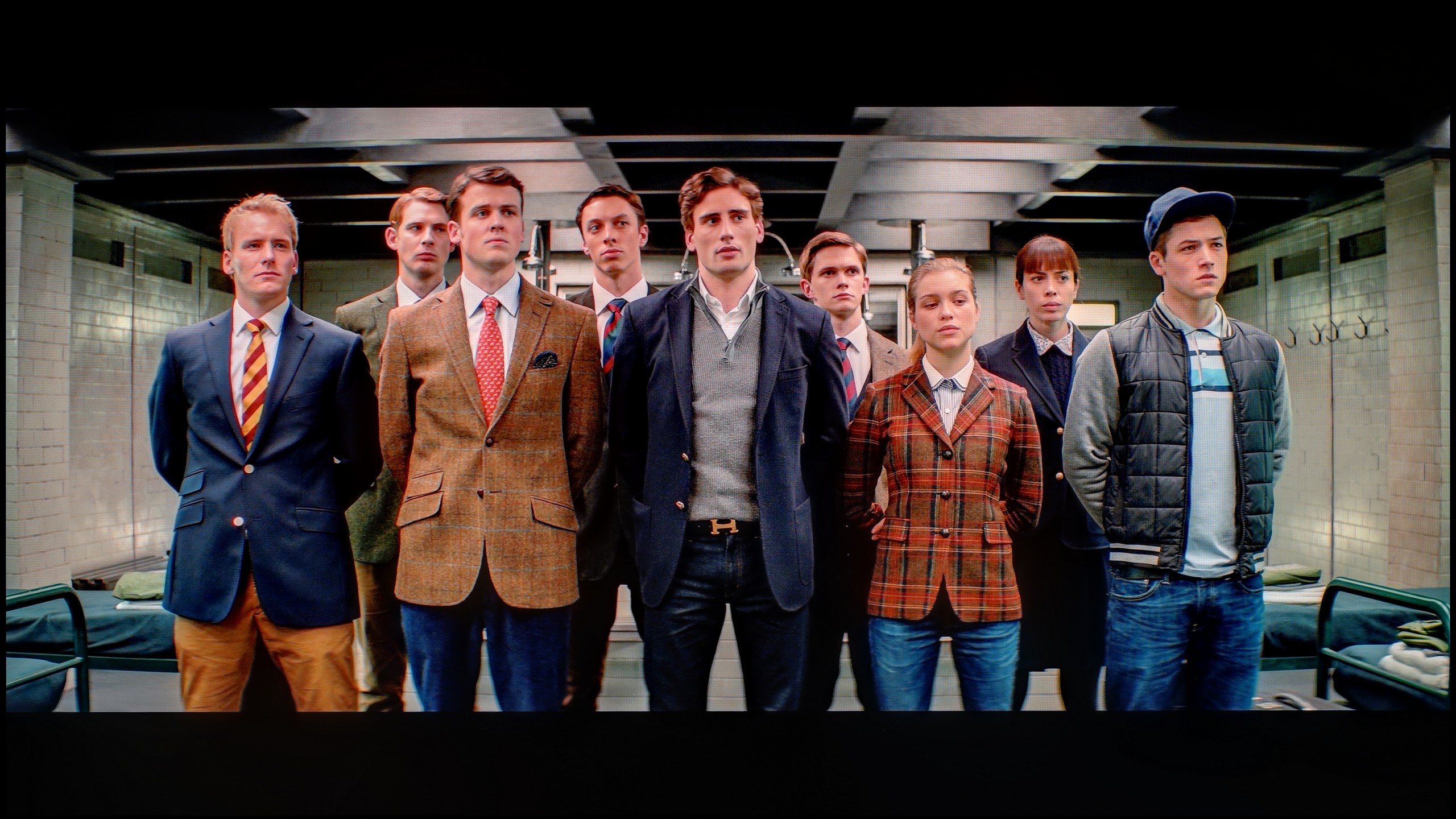


After calibration, TCL C75B has clearly improved when it comes to colour reproduction. Although the TV doesn't offer too many options for adjusting the white balance, we managed to improve its settings quite a bit. As a result, the image is no longer overly pink, and the colours now look much more natural and harmonious.
The gamma jump that was previously an issue hasn't completely disappeared, but we were able to significantly reduce it. This has made details in dark scenes more visible – both in HD and 4K HDR content.
Unfortunately, the lack of local dimming is still noticeable. The 'blooming black' effect remains, but that's a limitation of the display itself. Still, the colours post-calibration look significantly better, and the image is much more pleasant to watch.
After calibration, we managed to eliminate practically all the previously mentioned errors. Older movies in SDR quality finally look like they should – without the sepia effect or artificial aging of the image. The atmosphere of the classics is back in place (no thanks needed, Star Wars fans), and the colours no longer resemble an Instagram filter.
One of the key changes was also the improvement of brightness characteristics in HDR content. We managed to control the EOTF curve in almost a reference manner. Admittedly, the most demanding users may detect minimal deviations in brightness, but honestly – most viewers won't even notice that. And it's no surprise because the vast majority of errors fall below the ΔE 3 value, which is below the threshold of visibility. After calibration, the S90F (WOLED) becomes a truly excellent display – one on which you can enjoy nearly perfect image quality.
Smoothness of tonal transitions
8.2/10
7.3/10

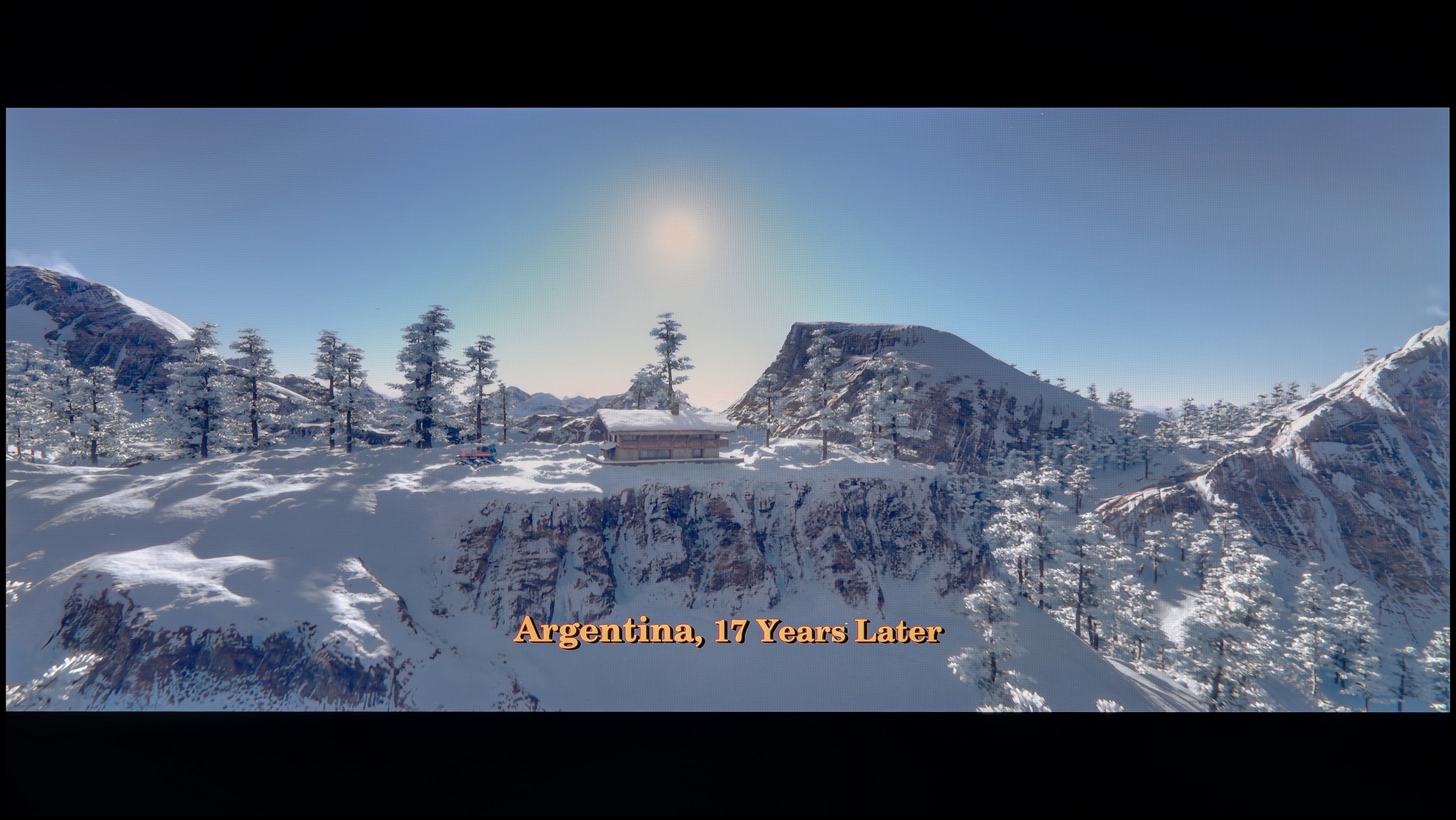



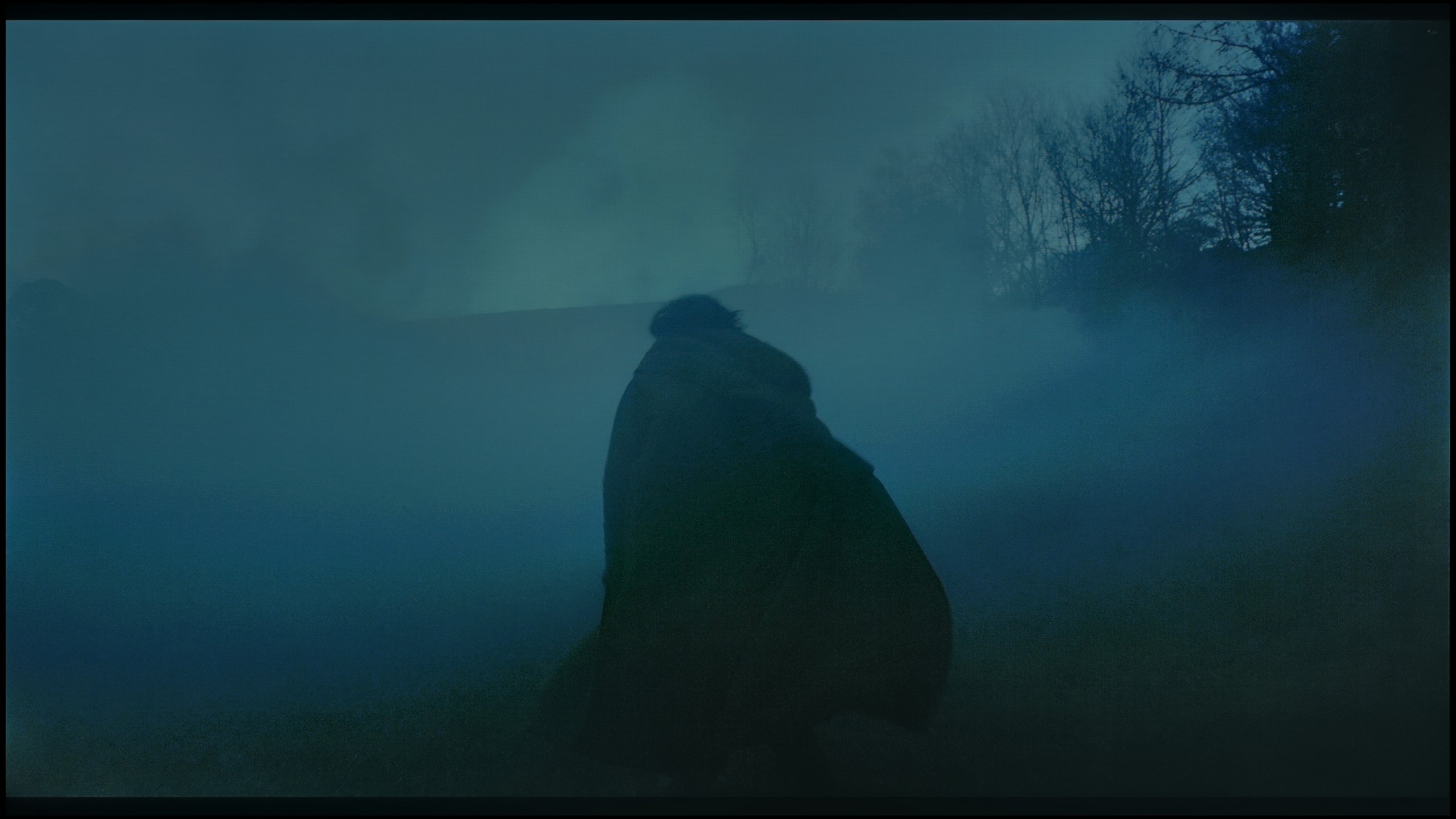






When it comes to tonal transition fluidity, TCL C75B performs really well. It particularly excels in gradation of the darkest colours – here the television does not disappoint and presents a high-quality image.
Some imperfections can be noticed in the brightest areas of the screen, such as in a scene from the film Kingsman (sun in a blue sky). Nevertheless, the final effect should satisfy the vast majority of users.
No and here we must honestly admit – the S90F has somewhat let us down. Compared to last year's S90D model with a WOLED panel (very similar to the one used this year), this year's Samsung performed worse. And this is not only against its main competitor, LG C5, but even when compared to its older brother. The biggest issues arise in dark scenes, where difficulties with smooth colour transitions are noticeable – the screen slightly steps the tonal transitions, causing some sections to lose their naturalness. We’re not sure what exactly went wrong – perhaps it's a software issue or a different processing algorithm. It's a shame, because we hoped that the level from last year would at least be maintained. Unfortunately, it's a step backwards.
Image scaling and smoothness of tonal transitions
5/10
7.5/10
Smooth transition function

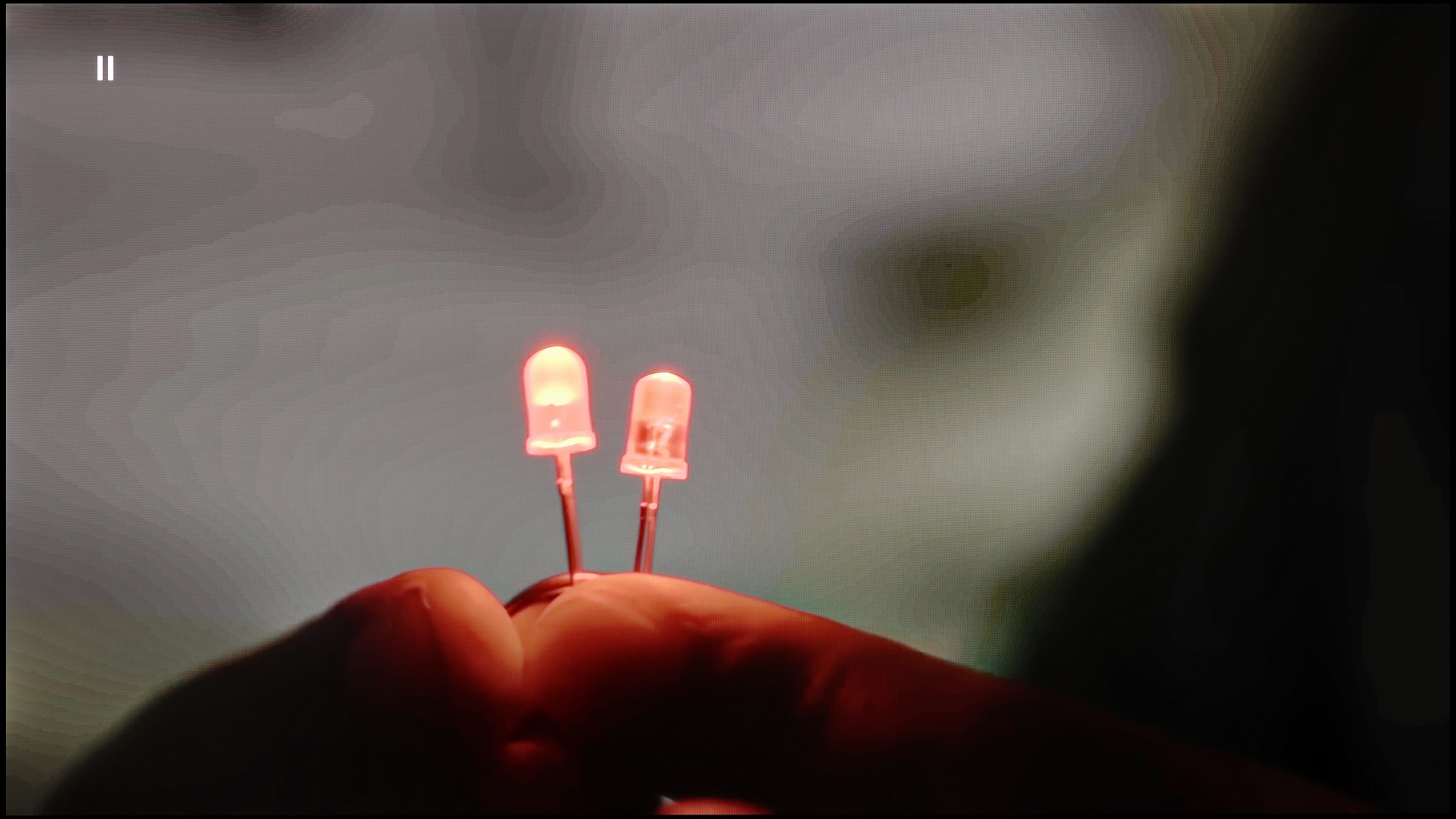
Image without overscan on the SD signal

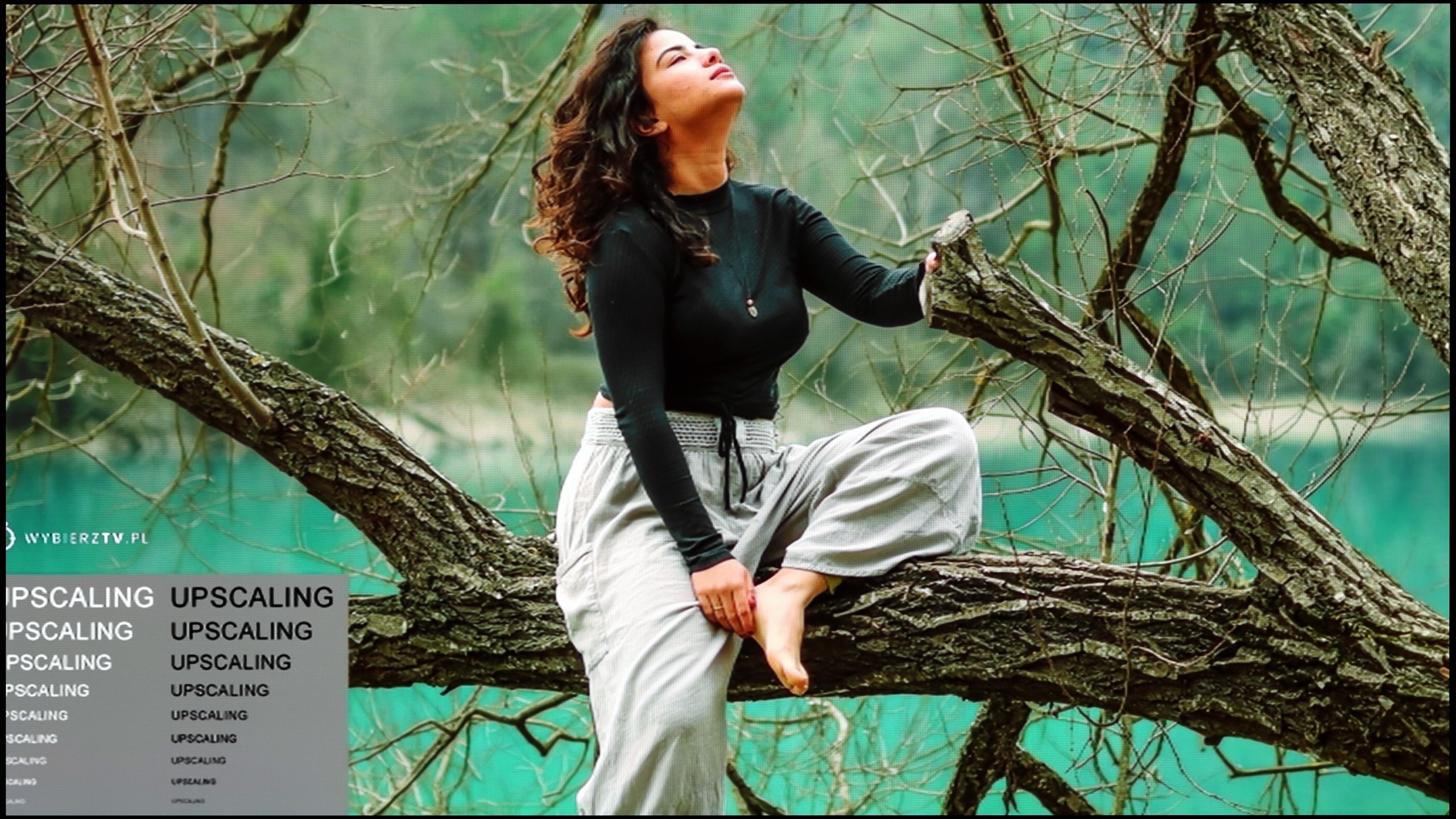
TCL C75B has a feature for smoothing tonal transitions, but unfortunately, we cannot praise it. Regardless of the selected level – low or high – tonal transitions in older materials remained visible, as if the feature wasn’t working at all. It’s hard to say anything positive about it, as in practice it seems completely useless.
Image scaling is better. The TV handles it quite decently, although on thinner elements, like branches in the background, you can see slight jaggedness. However, this is not something that significantly hinders everyday viewing.
Unfortunately, a bigger problem turned out to be overscan, or cropping of the image edges. In our tests, it happened that news ticker or other elements close to the edge of the screen were cut off. This is definitely something to pay attention to, especially if we use the TV for watching news programs or content with text on the screen.
Digital Image Processing in S90F:
Fortunately, Samsung, like in most of its models, manages to effectively tackle the unwanted posterisation effect in the S90F. The function responsible for this element is noise reduction, which does a pretty good job of smoothing tonal transitions and eliminating unnatural colour blending – of course, within its capabilities. Unfortunately, it works quite aggressively, so using it comes with trade-offs. In addition to improving gradation, it can also remove film grain or slightly soften facial features. In this case, the choice is yours – do you prefer a more "clean" image, or do you care about preserving the original texture of the material.
Image Scaling in S90F:
In this year's model, Samsung has implemented its proprietary AI processor – NQ4 Gen3, which really handles upscaling quite well. In our test scenes, the TV effectively "pulled up" lower quality towards artificial 4K – the image was more enjoyable to view, and the differences in sharpness between native and scaled content were minimal. Unfortunately, behind all this AI marketing façade lies a certain shortcoming. The S90F struggles with overscan. If you reach for truly archival material – e.g. a VHS tape of your parents' wedding – you have to reckon with the fact that the lower part of the image may get cut off. The function to adapt the image to resolution simply does not work as it should here.
Blur and motion smoothness
7.3/10
8.5/10

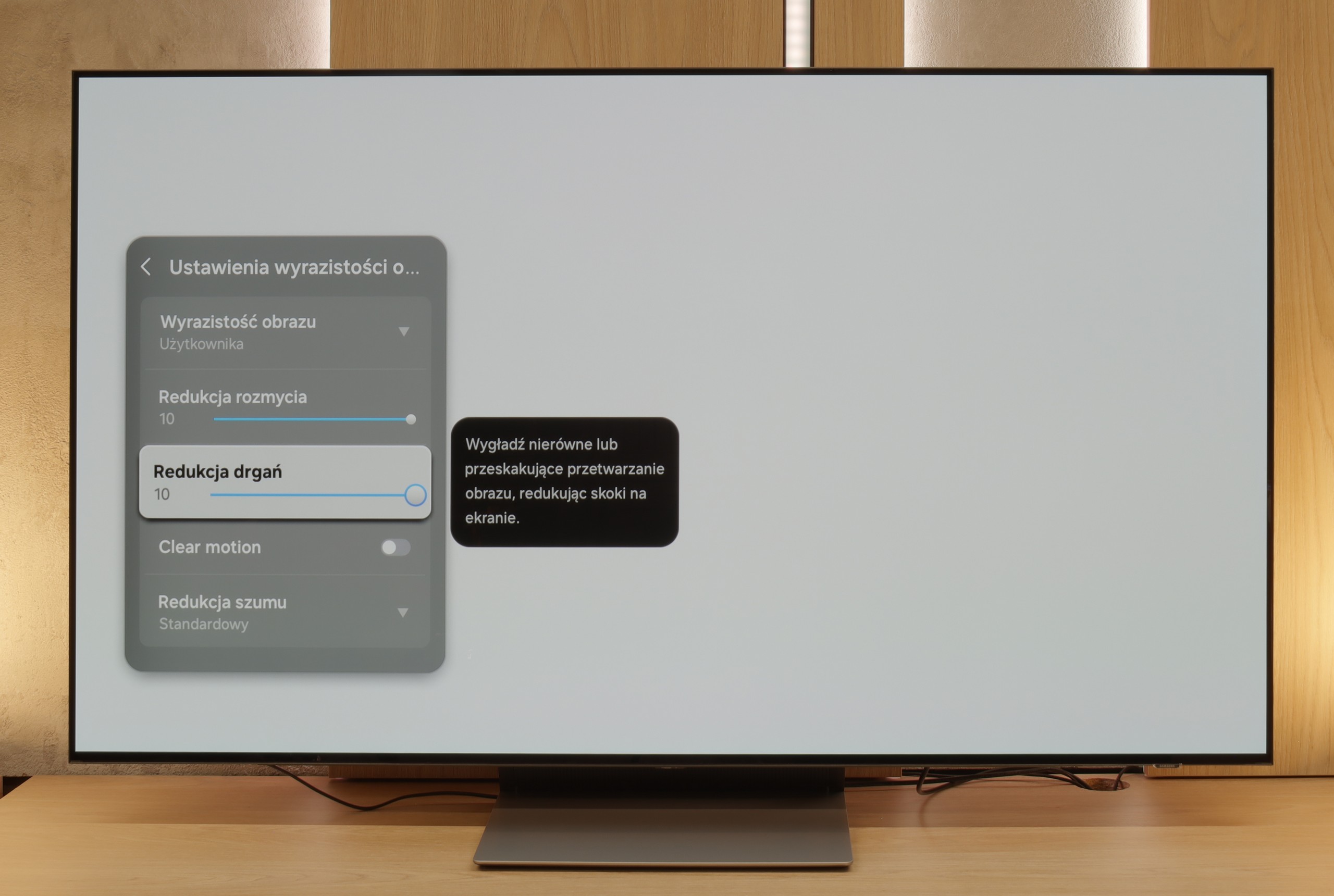
Blur (native resolution, maximum refresh rate):






TCL C75B definitely has something to offer gamers. The television is equipped with a panel that can display images with a refresh rate of 144 Hz in 4K, and even 240 Hz in Full HD. These are really impressive results, especially for a model from the budget range.
On top of that, there are features for improving smoothness and reducing motion blur in films. The "Motion" option allows for precise adjustment of the effect on a 10-point scale, providing significant personalisation possibilities – everyone can set the smoothness to their liking.
S90F really handles motion excellently – after all, it’s an OLED with a 144 Hz panel, so sports and games look absolutely stunning on it. The image is smooth, clear, and there’s no room for ghosting or blurring, which can sometimes plague cheaper LCDs.
The TV also comes equipped with motion smoothness settings that allow you to customise everything to your liking. We have motion blur reduction and judder reduction – you can set it so that the image is super smooth (even to the point of looking a bit soap opera-like), or more cinematic, with the classic “jumpiness” of 24 frames. The choice is yours, Samsung imposes nothing.
Console compatibility and gaming features
9.8/10
9.5/10
- ALLM
- VRR
- VRR range48 - 240Hz48 - 144Hz
- Dolby Vision Game Mode
- Correct implementation of HGIG
- 1080p@120Hz
- 1440p@120Hz
- 4K@120Hz
- Game bar

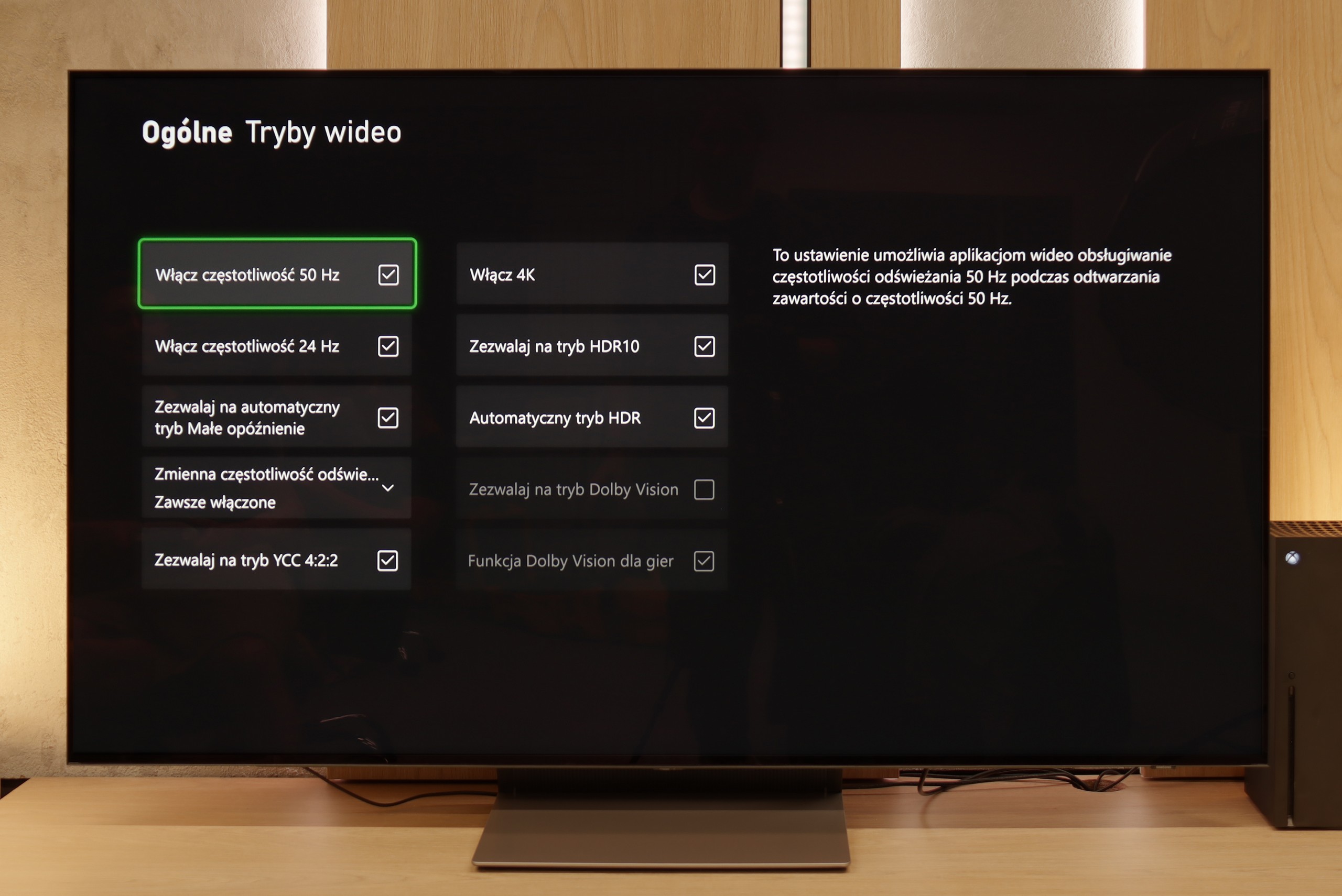

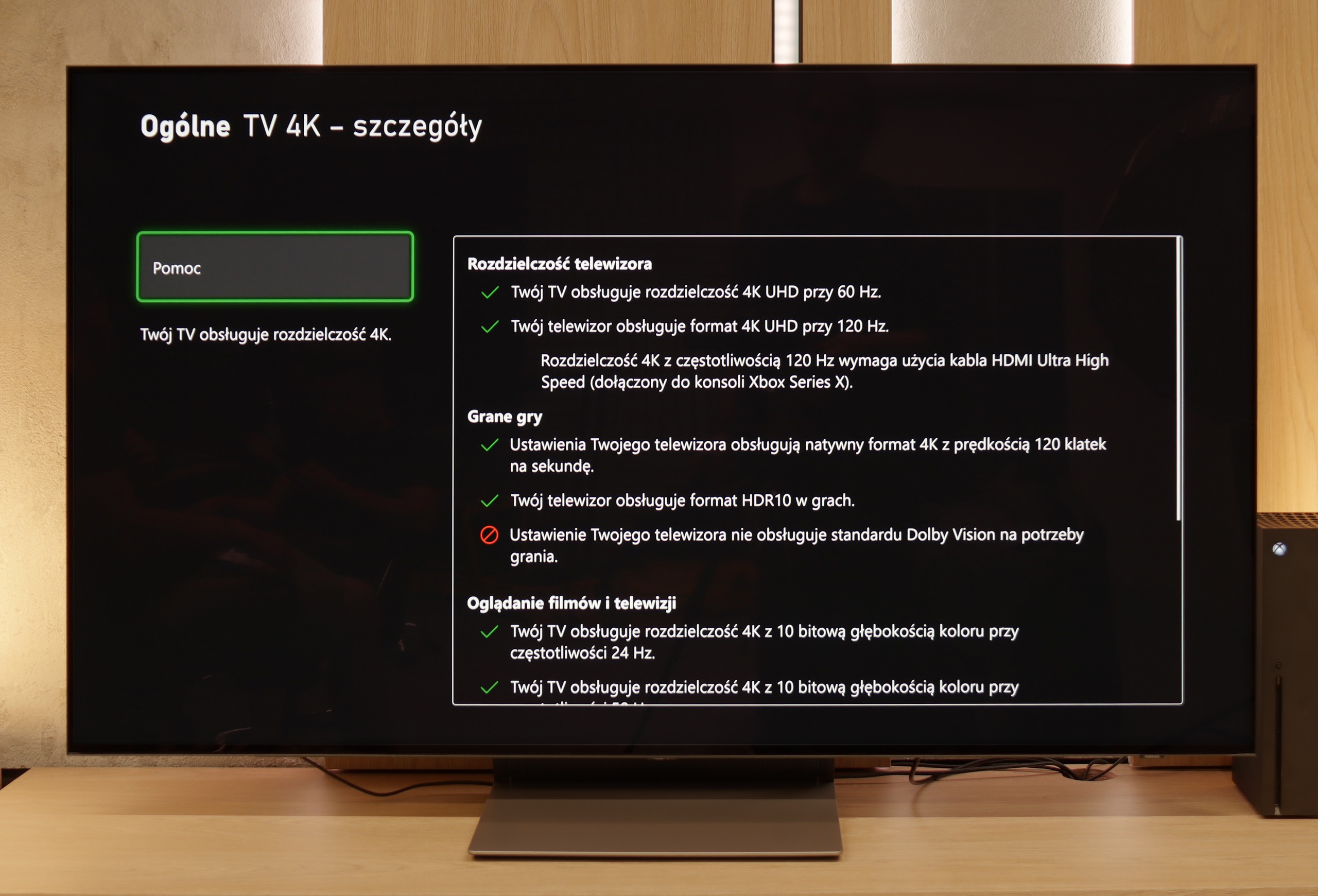

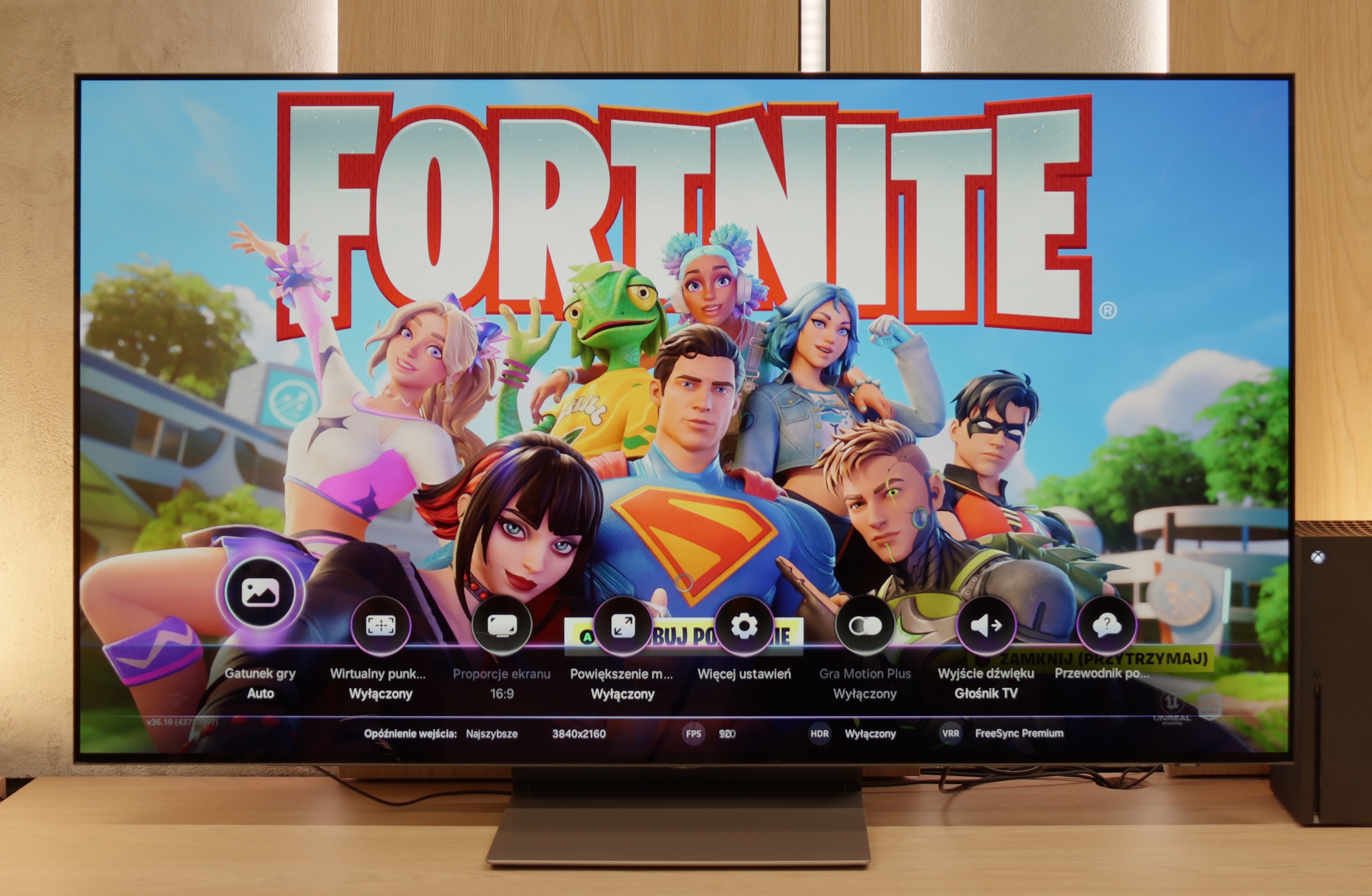


TCL C75B is undoubtedly a television designed with gamers in mind. It has almost everything needed for even the most demanding console users. With the implementation of full bandwidth HDMI 2.1, the TV supports features like ALLM (automatic low latency mode) and VRR (variable refresh rate) – operating within the full capabilities of the TV, up to 240 Hz in Full HD resolution.
Additionally, the television supports advanced HDR technologies, including Dolby Vision and HGiG, which allows for even better detailing in HDR-optimised games. C75B is also equipped with a very convenient interface for gamers in the form of Game Bar, where you can check all key parameters such as refresh rate, input lag, or picture settings – all just a click away.
In one sentence: C75B is a great choice for gamers, offering a wide range of features that fully enable enjoyment of the capabilities of modern consoles and games.
When it comes to gaming features – the S90F has absolutely nothing to complain about. Aside from the lack of Dolby Vision, which is already the norm for Samsung. The television operates at 144 Hz, has four HDMI 2.1 ports, so you can easily connect more than one console or PC. Onboard, we also find Game Bar – a practical tool that allows you to quickly preview picture settings, VRR status, ALLM mode, and other useful options. Game Motion Plus deserves special mention – Samsung's proprietary motion smoother that actually works sensibly in games. The image appears smoother, but without any artificial effects or slowdowns.
It's also worth mentioning the HGiG feature, which – and this may be a slight surprise – works correctly. We bring this up because Samsung clearly messed something up in one of the recent updates, and in some models, the option responsible for HGiG simply... disappears from the menu. Setting it up becomes almost impossible. Fortunately, our S90F unit did not have this issue, but the situation is dynamic, so it's worth keeping this in mind and regularly checking for new software versions and information from the manufacturer.
Input lag
9.8/10
10/10
SDR
HDR
Dolby Vision
The input lag on the TCL C75B is something that truly impresses. With a refresh rate of 144 Hz, the lag is just 9 ms, making the TV's response to our actions on the controller or keyboard practically instantaneous. For 60 Hz, the result is 19 ms – it's not a record low value, but it still falls within a range where the lag is practically unnoticeable during gaming. One could say that the difference is hardly felt, which makes this TV a good choice even for more demanding gamers.
Input lag in the S90F is at a level that's practically monitor-like. Under the best conditions, it achieved a score of 5 ms, which is an absolutely stunning result – even a benchmark for the most demanding gamers. Whether you're playing fast-paced shooters, fighting games, or simply need instant response – the S90F does not disappoint in this regard at all.
Compatibility with PC
7.6/10
8.6/10

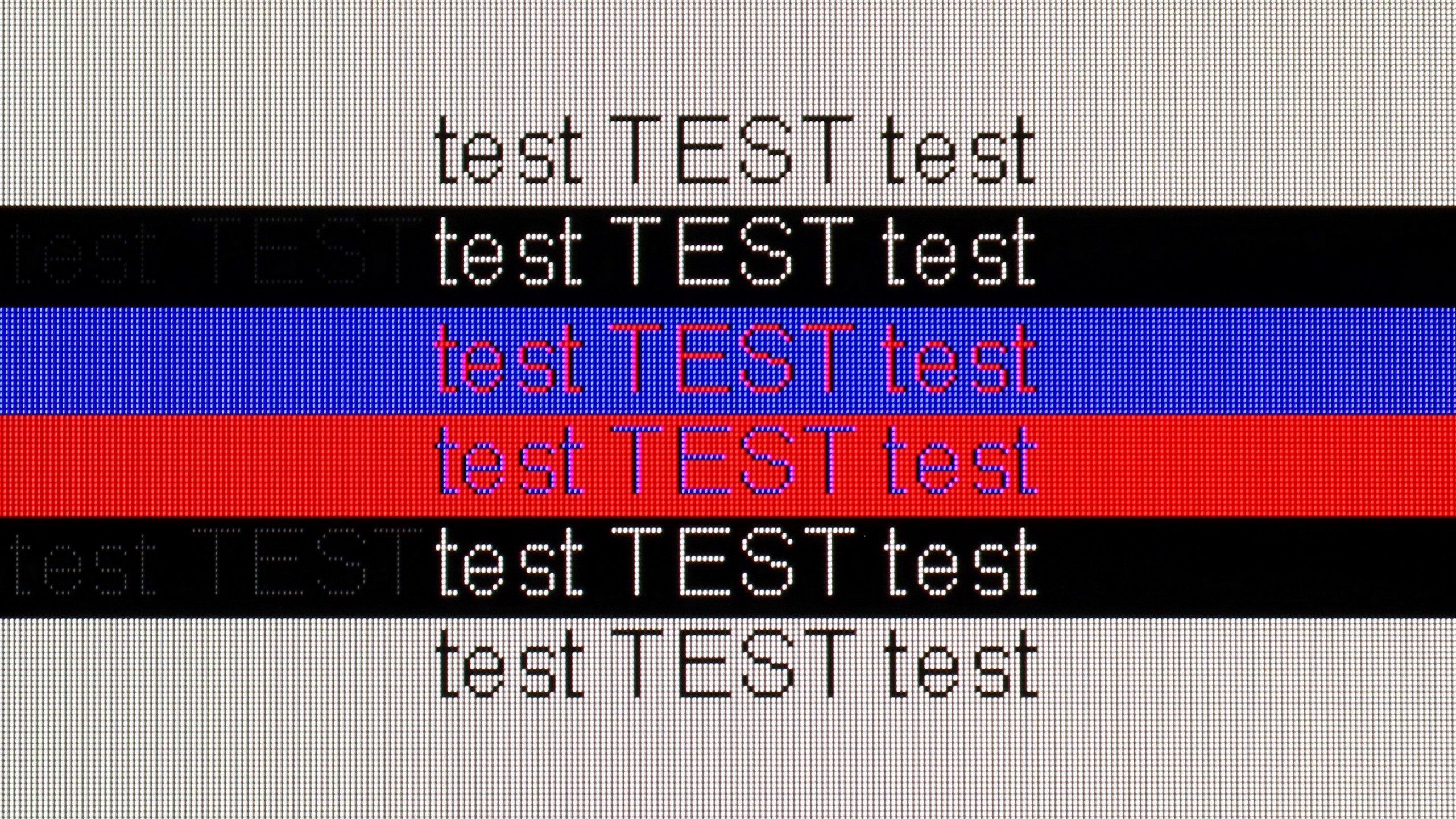
TCL C75B is quite a good choice for connecting to a computer. With high refresh rates, low input lag, and G-Sync support, the television performs exceptionally well in games – both fast-paced and more demanding ones. The image is smooth, and the response to our actions is quick, which gamers will undoubtedly appreciate.
For office work, the television also holds up well. Text is readable, although on a dark background some imperfections can be noticed – some fonts appear as if they are missing pieces of vertical lines. This may be distracting if we work a lot with documents or text editing. However, if the computer is mainly used for gaming or watching movies, TCL C75B will easily serve its purpose as a monitor. It’s a versatile device that can handle most applications.
S90F is a great tool for both gaming on PC and daily work. Gamers can rest easy – the TV effortlessly supports image synchronisation with NVIDIA graphics cards thanks to G-Sync, and the 144 Hz refresh rate combined with very low input lag only confirms this. S90F also excels as a monitor for working with text. Of course, the readability of fonts may be slightly compromised by the characteristic pixel structure in the RWGB arrangement, but this is a topic well known primarily to those who work with a lot of text, code, or Excel spreadsheets. For most users, this will be perfectly acceptable.
Viewing angles
2.7/10
7.4/10
The viewing angles on the TCL C75B are, unfortunately, very poor. This is a typical compromise with VA panels – better blacks at the expense of off-angle visibility. The picture quickly loses quality when viewed from the side, which is the complete opposite of what IPS panel televisions offer. If we plan to watch the TV mainly head-on, this won't be a big problem. However, with a larger number of viewers sitting at different angles, the picture quality may disappoint.
The viewing angles on the S90F are very good, although it must be honestly admitted that they are slightly inferior to the 65" version with the QD-OLED panel. Nevertheless, the picture quality at wide angles performs very well – colours remain vivid, and brightness doesn’t drop dramatically when viewed from the side. There's no need to move the TV closer to see a clear image. For most users, this level is more than sufficient.
TV efficiency during daytime
4.9/10
6.1/10

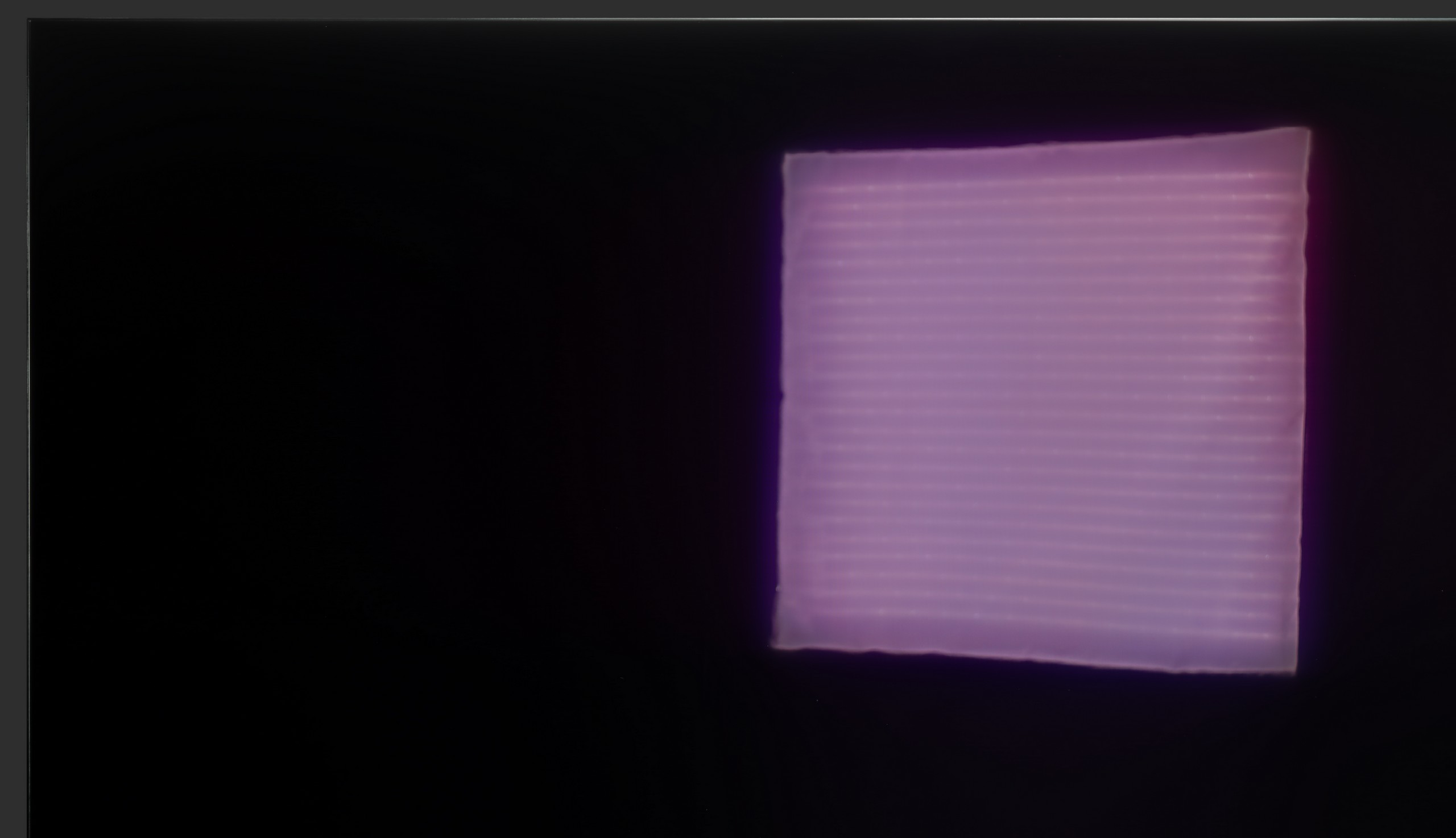


Matrix brightness
Average luminance SDR
SAMSUNG S90F (WOLED): 405 cd/m2
TCL C75B: 366 cd/m2
TCL C75B performs okay during the day. The satin display somewhat limits reflections, but it's not an ideal solution. Brightness is also an issue – 350 cd/m² is simply not enough for comfortable viewing in a brightly sunlit room.
In less extreme conditions, for example, in a moderately lit room, the TV does alright. However, if the sun starts streaming directly onto the screen in summer, watching can become tiring. It's worth keeping this in mind when choosing this model.
S90F is really bright for an OLED TV. Of course, it shouldn’t be compared to Mini-LED TVs or the brightest high-end OLEDs, but under normal lighting conditions, it’s easy to watch something during the day. The brightness is high enough that there’s no need to close the curtains every time a movie or series is turned on. However, it’s important to remember that the anti-reflective coating on WOLED panels is not the best. Reflections can be noticeable, especially with bright light coming in from the window. In such cases, it’s best to reach for curtains.
Details about the matrix
Subpixel Structure:
Panel uniformity:

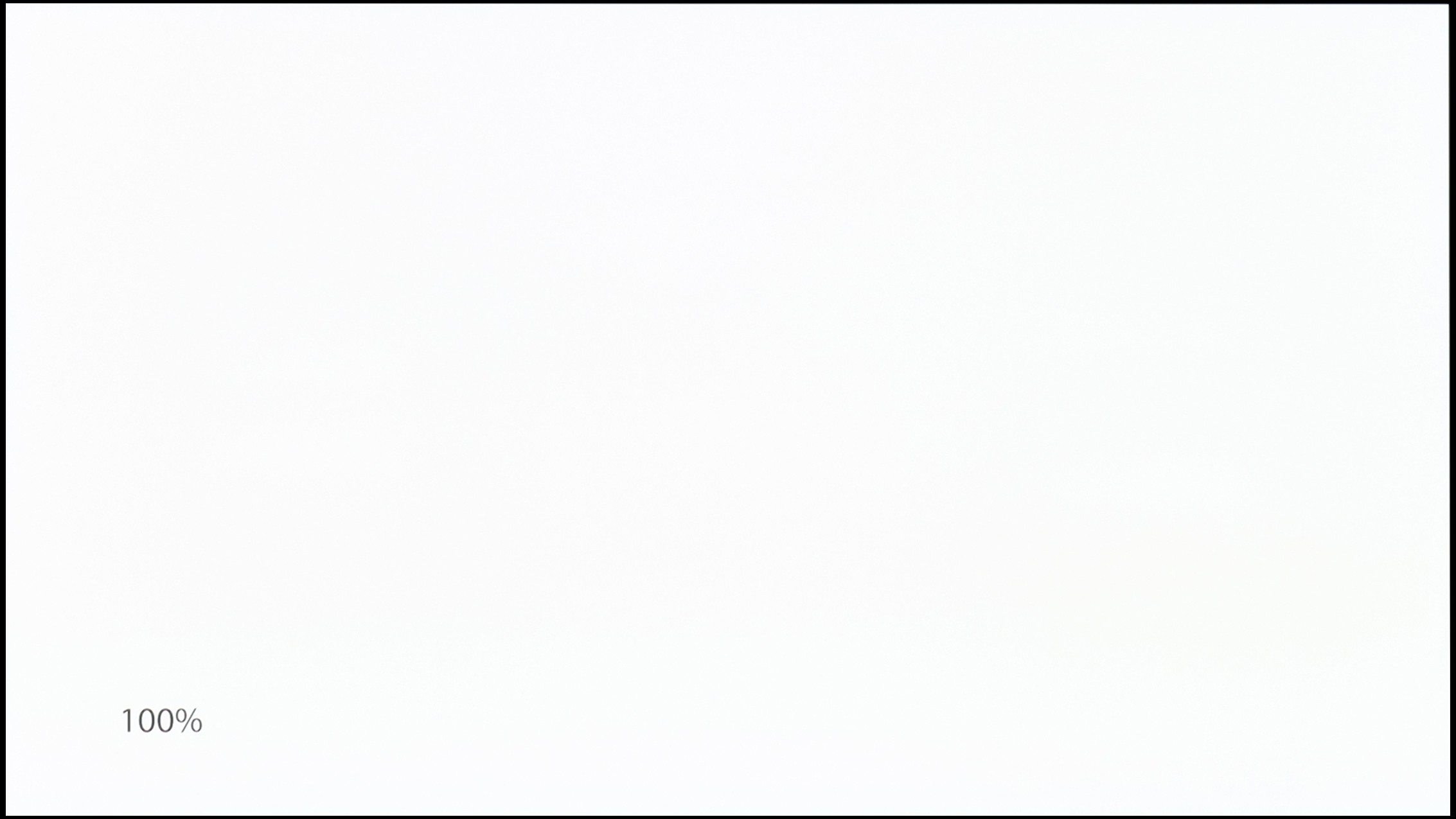
TV features
7.7/10
7.5/10
- HDMI inputs2 x HDMI 2.0, 2 x HDMI 2.1 48Gbps0 x HDMI 2.0, 4 x HDMI 2.1 48Gbps
- Other inputsRCA (Chinch)Toslink (Optical audio), IR (remote)
- OutputsToslink (Optical audio), eARC (HDMI), ARC (HDMI)Toslink (Optical audio), eARC (HDMI), ARC (HDMI)
- Network InterfacesWi-Fi 2.4GHz, Wi-Fi 5GHz, Ethernet (LAN) 100MbpsWi-Fi 2.4GHz, Wi-Fi 5GHz, Ethernet (LAN) 100Mbps
- TV receptionDVB-T, DVB-T2, DVB-S, DVB-S2, DVB-CDVB-T, DVB-T2, DVB-S, DVB-S2, DVB-C
Classic features:
- Recording to USB (terrestrial TV)
- Recording programming
- Picture in Picture (PiP)
- RF remote control (no need to aim at the screen)
- Backlit remote control
- Teletext
- Audio only mode
- Possibility to connect Bluetooth headphones to the TV
- Possibility to simultaneously use Bluetooth headphones and the TV speaker
Smart features:
- AirPlay
- Screen mirroring (Windows Miracast)
- Wyszukiwanie głosowe
- Voice search in native language
- Ability to connect a keyboard and mouse




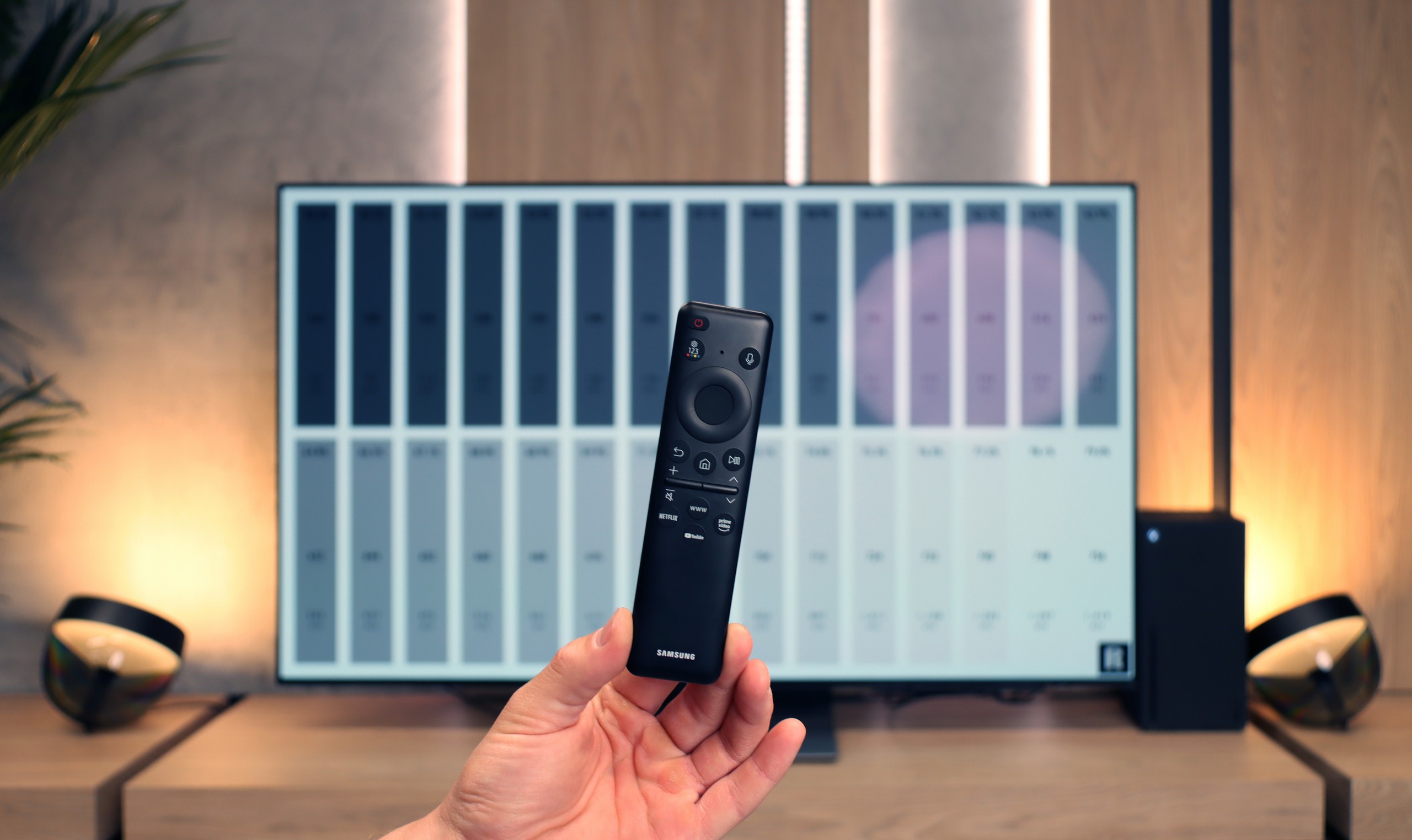
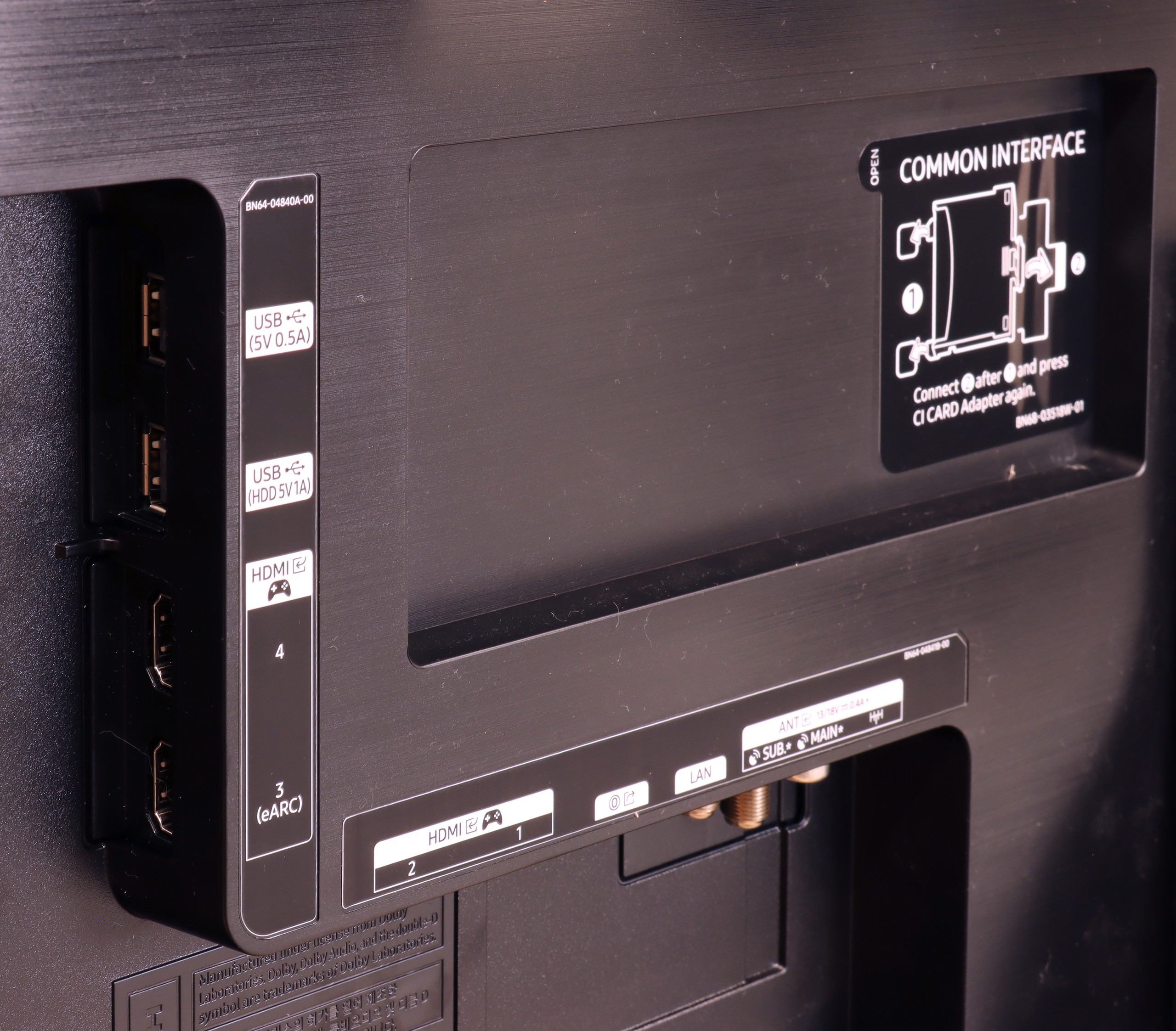
TCL C75B is a television that primarily relies on the Google TV system. The platform offers access to most popular apps, such as Netflix, YouTube, and Prime Video, making it great for watching content from the internet. However, it's worth mentioning that the system can sometimes stutter slightly, which may be noticeable during everyday use.
In terms of smart features, the C75B performs well. Voice control with the help of the built-in assistant works smoothly, and thanks to AirPlay and Miracast, we can easily transfer content from our phone or laptop. Bluetooth allows for effortless connection of headphones, controllers, or other devices.
However, anyone expecting classic television features may be disappointed. There is no option to record programmes on a USB drive or a picture-in-picture (PiP) feature. TCL has been skipping such features for some time, which may not appeal to users who mainly rely on traditional television.
Samsung S90F is equipped with a range of classic TV features, such as EPG, CI module, and headphone support, but there’s also more to it. Thanks to the presence of several tuners, the TV offers a picture-in-picture (PiP) function – very useful, for example, when we are watching one match but want to check the score of another match happening simultaneously. It's a pity that Samsung has completely abandoned the USB recording feature for some time now, but this is partially compensated by good integration with decoders and other devices. The remote – while small and lacking a numeric keypad – allows you to control multiple devices connected to the TV. You can easily manage a decoder, amplifier, console, or other gear with it – all without needing to reach for several remotes.
As for the Smart TV system – Tizen on the S90F operates very smoothly, which is not a given in cheaper models with this system. The system itself is extensive and offers plenty of features – we have screen mirroring, AirPlay, Bluetooth device support, and quite a few options related to smart home functionality, such as controlling bulbs or other smart devices directly from the TV. However, it’s important to remember that Tizen is a closed system, so when it comes to apps – we are limited to what we find in the Samsung store. And while it is quite extensive, it doesn’t match the flexibility of the Google TV platform. It’s worth keeping this in mind if you have specific needs for niche applications.
Playing files from USB
9.2/10
7.5/10
Supported photo formats:
Maximum photo resolution:

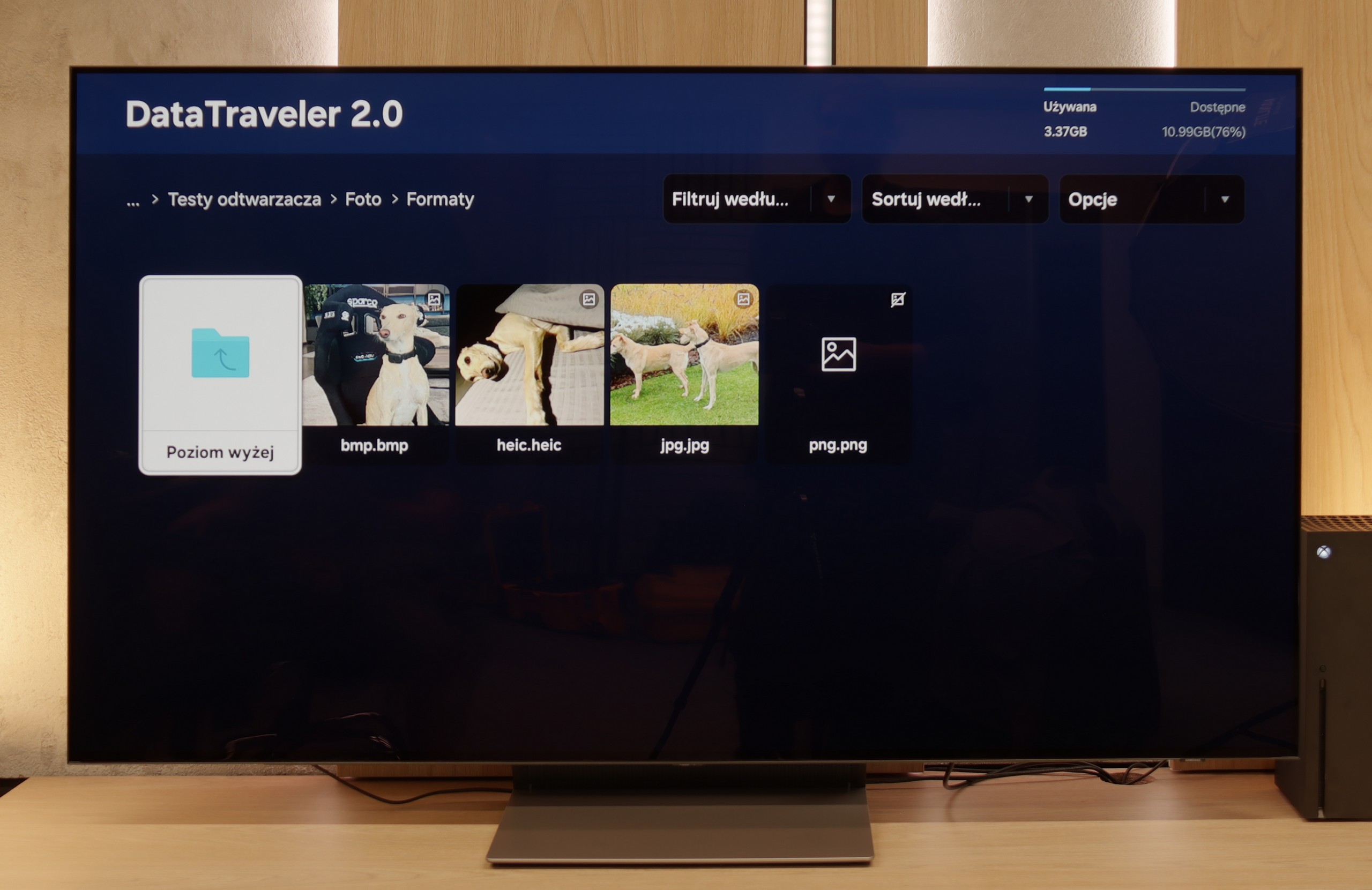
The built-in media player in TCL C75B works really well. It handles most popular image and audio formats with ease. Although there are some shortcomings in the support of certain formats, thanks to Google TV, you can easily install an alternative player that will solve this issue.
The built-in media player in the S90F is alright and supports quite a few popular formats. Unfortunately, during testing – once again – we encountered issues, despite the manufacturer's claims. The television did not play some formats that are supposedly supported, such as HEIC photos (Apple's version), or SRT and SUB subtitle files. In everyday use for most people, such a player will be sufficient to play a movie from a USB drive, but it’s worth keeping in mind that surprises may occur. Perhaps the situation will be improved in future updates, but at the time of writing this review – it works as it works.
Apps
10/10
8.3/10














































Sound
6.6/10
7.4/10
- Subjective sound quality:6.6/107.4/10
- Dolby Digital Plus 7.1:
- Dolby True HD 7.1:
- Dolby Atmos in Dolby Digital Plus (JOC):
- Dolby Atmos in Dolby True HD:
- DTS:X in DTS-HD MA:
- DTS-HD Master Audio:
The sound on the TCL C75B is really pleasant, especially at lower volume levels. The bass is noticeable and complements the sound well, but only up to about 40% volume. At higher settings, problems start to arise – the bass causes unpleasant vibrations, and the speakers begin to crackle. If we plan to use higher volume levels more frequently, it’s worth considering purchasing a soundbar, as the built-in speakers may not meet more demanding situations.
The S90F plays really quite nicely, with noticeable bass and pretty good dynamics. A definite plus is the support for Dolby Atmos, which allows the TV to sound a bit more “spatial” – of course, as much as the built-in 2.1 set allows 😉. Unfortunately, as is often the case with Samsung, it lacks support for the DTS:X format. So, if you want to take advantage of its capabilities, you'll need to connect your audio equipment directly to the amplifier, rather than to the TV itself – otherwise, it just won't work.


